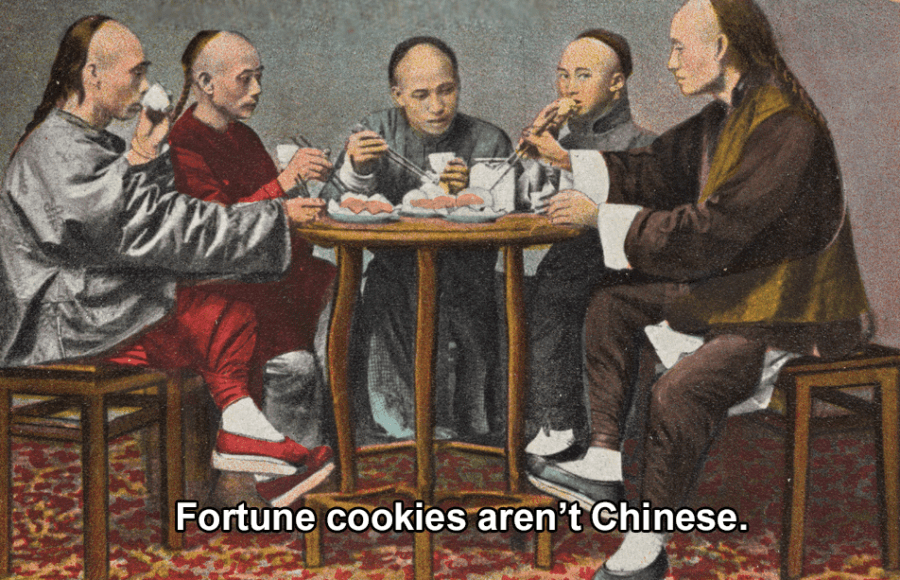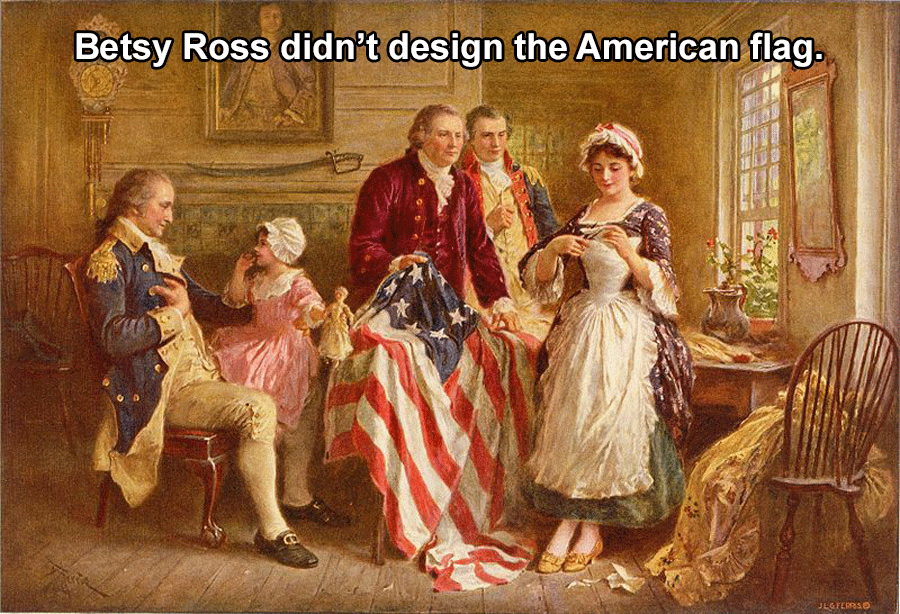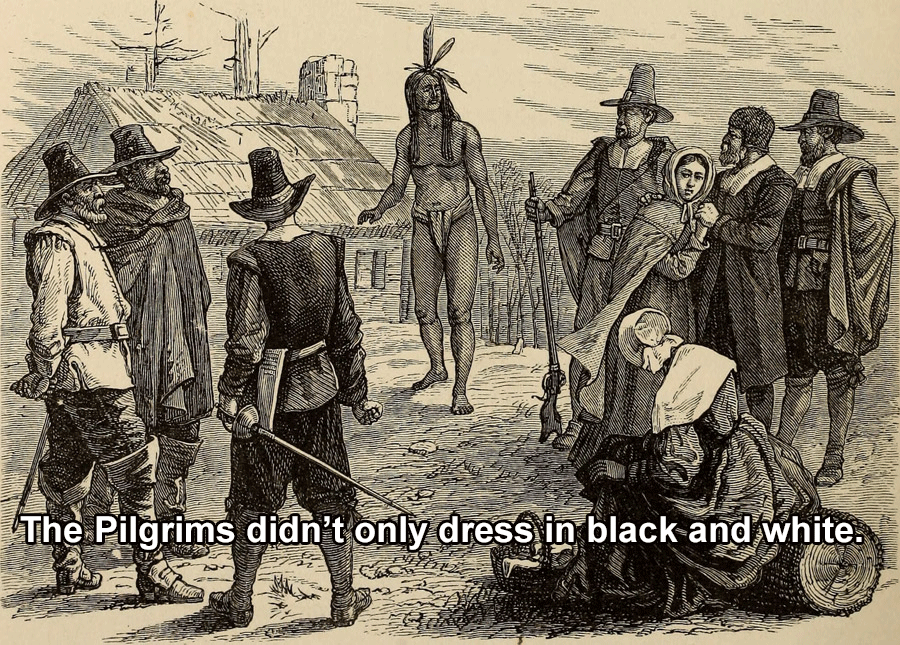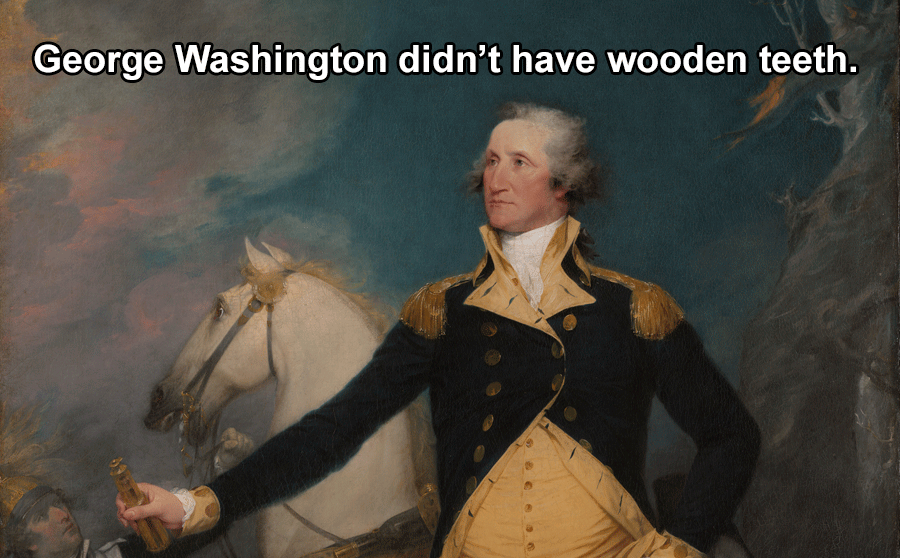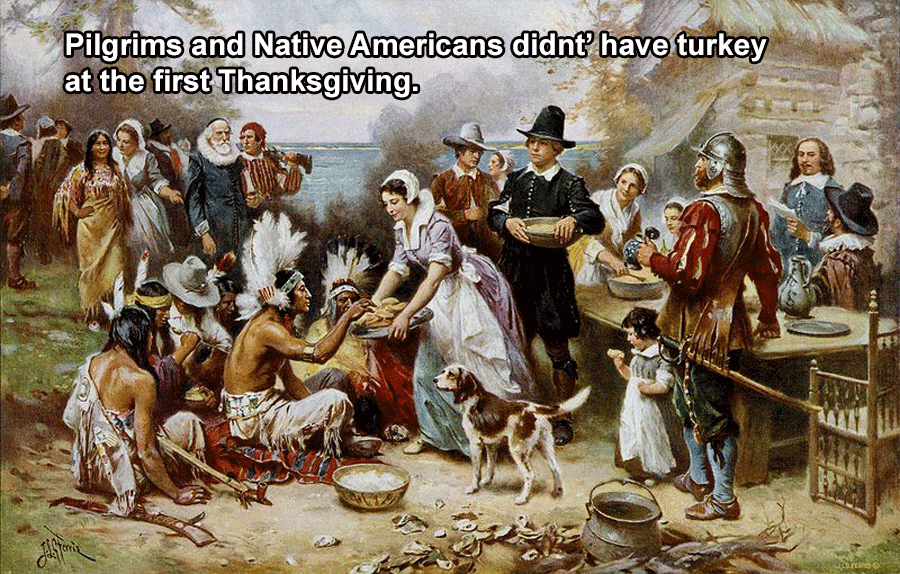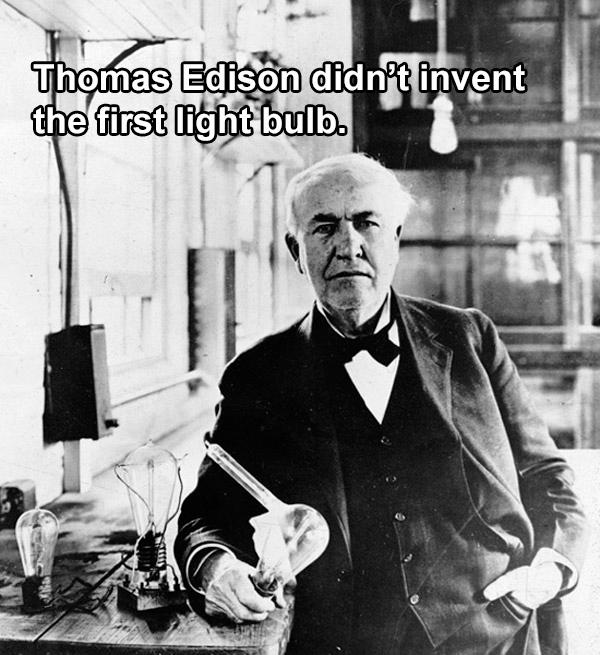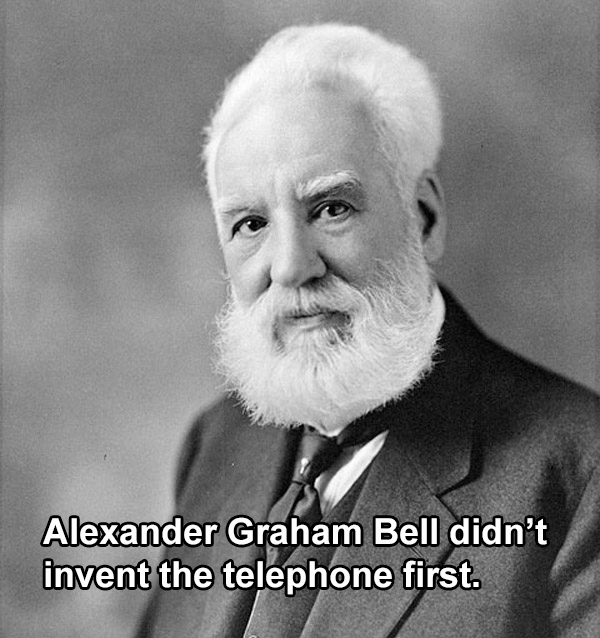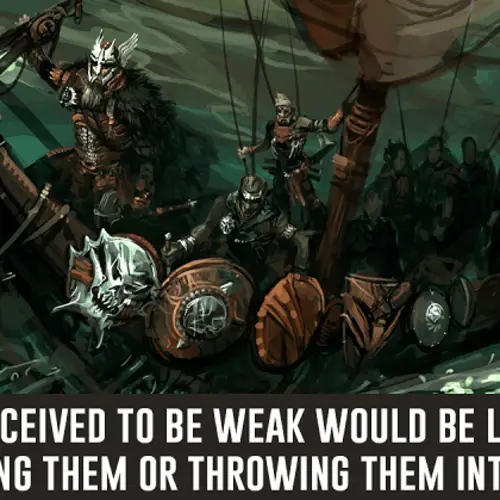1 of 34
They were actually invented in Japan and are almost never served with a meal in China.NYPL/Wikimedia Commons
2 of 34
Columbus' four voyages only made it to the Caribbean islands — and Norse explorer Leif Erikson is believed to have reached what is now Canada centuries earlier.Library of Congress 3 of 34
The real creator was likely Francis Hopkinson, a New Yorker who designed numerous seals for the newly-created country.Library of Congress
4 of 34
His height was famously recorded as 5'2". However, that was in French units, not English units, in which he was 5'7", which was slightly taller than average for French men at the time.Wikimedia Commons
5 of 34
In fact, the Pilgrims wore garments of red, green, violet, and blue — and all with far fewer buckles than you'd think.Wikimedia Commons
6 of 34
He did wear dentures, but his false teeth were a combination of gold, lead, ivory, horse teeth, and teeth from slaves.Wikimedia Commons
7 of 34
The accused either died in prison or by hanging. One was executed by pressing.Library of Congress
8 of 34
While the Continental Congress ratified the document on July 4, independence had been declared on July 2 and the document wasn't signed until Aug. 2.Wikimedia Commons
9 of 34
As his personal correspondence shows, Abraham Lincoln's goal was to save the Union, whether that meant freeing some, all, or no slaves.Wikimedia Commons
10 of 34
It never existed in the Middle Ages, but was actually assembled in the 19th century from various artifacts to create a menacing device for show. Wikimedia Commons
11 of 34
Actually, even in infamously violent Wild West towns like Tombstone, Ariz., you had to leave your pistol with the sheriff and couldn't retrieve it until leaving town.Amon Carter Museum of American Art/Wikimedia Commons
12 of 34
Europeans generally accepted the claims of a spherical Earth made by Ancient Greek experts centuries earlier.Wikimedia Commons
13 of 34
It's more likely that duck, goose, or deer was the protein on the menu, rather than wild turkey.Wikimedia Commons
14 of 34
Einstein did, however, fail his first attempt at admission to the Swiss Federal Polytechnic School. Doris Ulmann/Library of Congress
15 of 34
British aviators John Alcock and Arthur Brown actually flew from Newfoundland to Ireland eight years earlier.Library of Congress
16 of 34
First "working light bulb" would be more accurate. Other inventors had created similarly functioning bulbs, but it was Edison and his team who created the longer-lasting filament.Library of Congress
17 of 34
Our ancestors had a nomadic lifestyle and mostly slept in open air camps, retreating to caves only to escape harsh weather. Museum of Mongolian History/Wikimedia Commons
18 of 34
Many cities (at night), roads, and bridges are also visible, as well as Spain's Greenhouses of Almería.Wikimedia Commons
19 of 34
Franklin didn't approve of the bald eagle and did extoll the virtues of the turkey, but never actually suggested that the latter be an official U.S. symbol. He instead proposed we use an image of Moses. Wikimedia Commons
20 of 34
While the Holocaust did indeed kill 6 million Jews, that widely-known number ignores the further 5 million civilians (communists, Roma, Serbs, Polish intelligentsia, homosexuals, the disabled, and others) killed by the Nazis.Wikimedia Commons
21 of 34
Revere did warn of the British approach at the outset of the American Revolution, but he wasn't the only one and likely went door-to-door quietly spreading the news, given that shouting would have given away his clandestine mission. Wikimedia Commons
22 of 34
What an emperor would have done when deciding a gladiator's fate is extend a thumb for a kill and hide a thumb in his fist for an acquittal.Wikimedia Commons
23 of 34
Most historians attribute the phrase to French philosopher Jean-Jacques Rousseau, but France's last queen before the revolution was widely given credit because it fit with her reputation.Wikimedia Commons
24 of 34
The iconic mouse was actually the creation of animator Ub lwerks.Wikimedia Commons
25 of 34
Some historians state that Bell and his lawyer used bribery to have his patent pushed through ahead of the one rightfully submitted by inventor Elisha Gray earlier that same day, Feb. 14, 1876. Research also suggests that Bell even stole ideas from Gray's patent.Wikimedia Commons
26 of 34
This whole idea of the Viking with a horned helmet didn't come about until an opera performance in 1876.Wikimedia Commons
27 of 34
During a 1963 speech given by Kennedy in Berlin, he used the German phrase "Ich bin ein Berliner." Legend has it that he meant to say, "I am a citizen of Berlin," but by including the "ein," had changed the meaning of the sentence to say that he was a Berliner, a type of jelly doughnut. However, this grammatical explanation simply isn't accurate.Library of Congress
28 of 34
"Xmas" can be traced back to 1021, when British monks used it as an abbreviation because "X" stands for the Greek letter chi, the starting letter for "Christ" in Greek.Wikimedia Commons
29 of 34
This simply false report was spread by Nazi propagandists shortly after the German invasion of Poland in September 1939.Wikimedia Commons
30 of 34
While he did come up with hundreds of uses for the peanut, the invention of peanut butter can be traced all the way back to the Aztecs.Wikimedia Commons
31 of 34
Neither he phrase nor any close variant ever appears in Machiavelli's The Prince. Furthermore, the underlying sentiment had already famously been published by authors going back to Ancient Rome, centuries before.Wikimedia Commons
32 of 34
Companions are mentioned for all people, not just martyrs. The source for the 72 virgins comes from Persian scholar Imam Tirmidhi and is not part of the Quran.Pixabay
33 of 34
Derby and bowler hats dominated the Wild West, whereas the Stetson model now known as the cowboy hat didn't become popular until the tail end of the 19th century.Wikimedia Commons
34 of 34
Like this gallery?
Share it:
